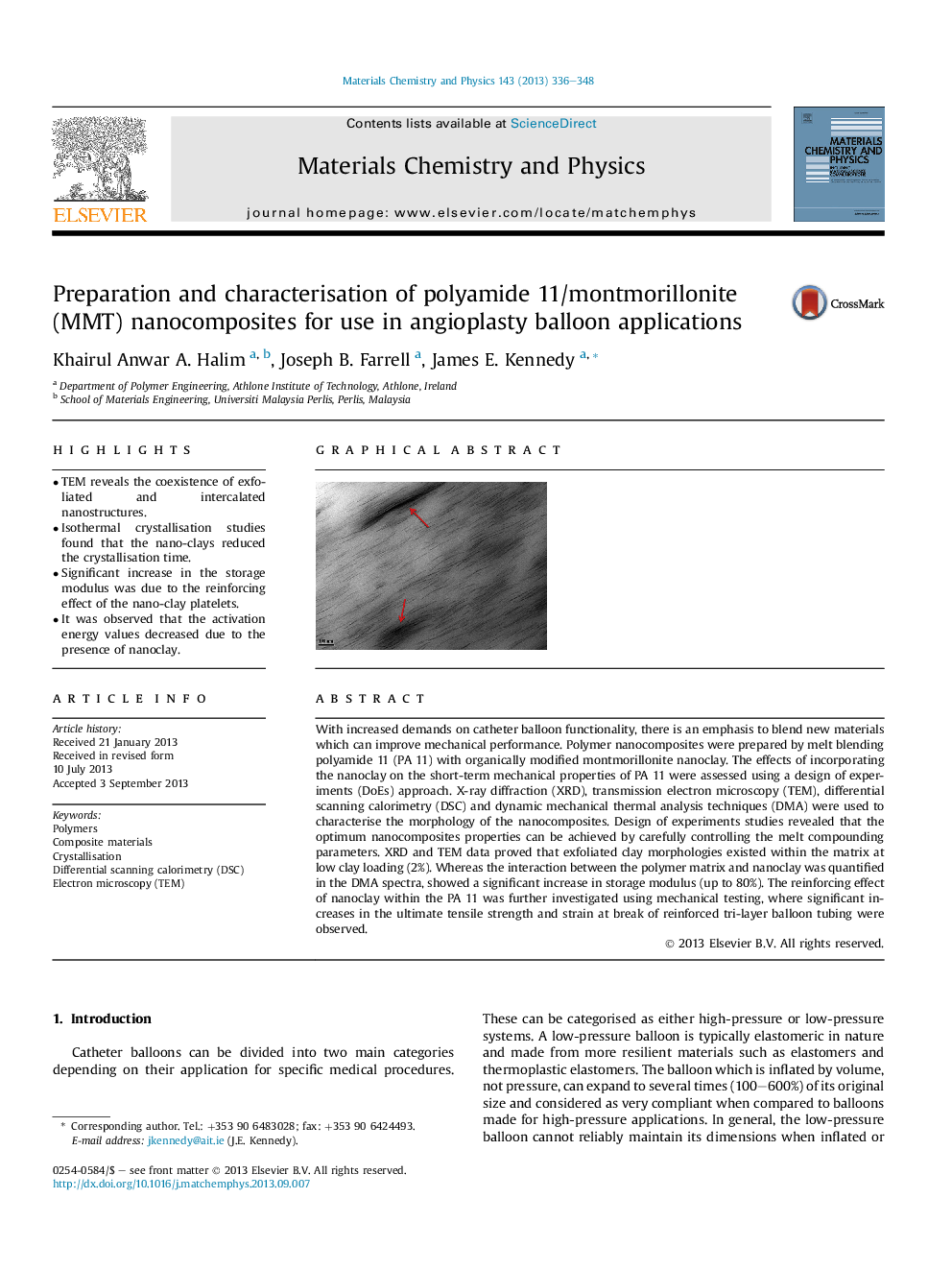| Article ID | Journal | Published Year | Pages | File Type |
|---|---|---|---|---|
| 1522493 | Materials Chemistry and Physics | 2013 | 13 Pages |
•TEM reveals the coexistence of exfoliated and intercalated nanostructures.•Isothermal crystallisation studies found that the nano-clays reduced the crystallisation time.•Significant increase in the storage modulus was due to the reinforcing effect of the nano-clay platelets.•It was observed that the activation energy values decreased due to the presence of nanoclay.
With increased demands on catheter balloon functionality, there is an emphasis to blend new materials which can improve mechanical performance. Polymer nanocomposites were prepared by melt blending polyamide 11 (PA 11) with organically modified montmorillonite nanoclay. The effects of incorporating the nanoclay on the short-term mechanical properties of PA 11 were assessed using a design of experiments (DoEs) approach. X-ray diffraction (XRD), transmission electron microscopy (TEM), differential scanning calorimetry (DSC) and dynamic mechanical thermal analysis techniques (DMA) were used to characterise the morphology of the nanocomposites. Design of experiments studies revealed that the optimum nanocomposites properties can be achieved by carefully controlling the melt compounding parameters. XRD and TEM data proved that exfoliated clay morphologies existed within the matrix at low clay loading (2%). Whereas the interaction between the polymer matrix and nanoclay was quantified in the DMA spectra, showed a significant increase in storage modulus (up to 80%). The reinforcing effect of nanoclay within the PA 11 was further investigated using mechanical testing, where significant increases in the ultimate tensile strength and strain at break of reinforced tri-layer balloon tubing were observed.
Graphical abstractFigure optionsDownload full-size imageDownload as PowerPoint slide
